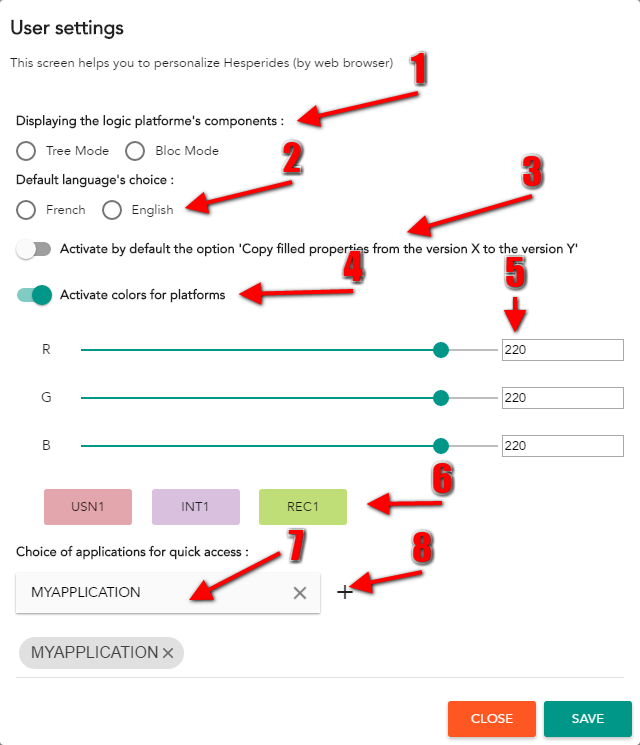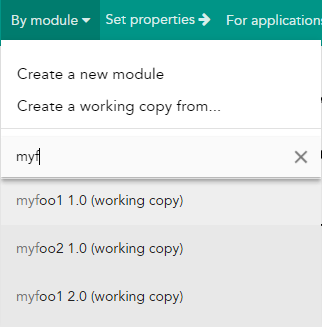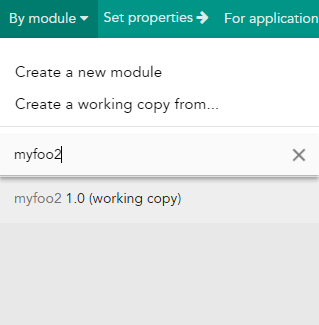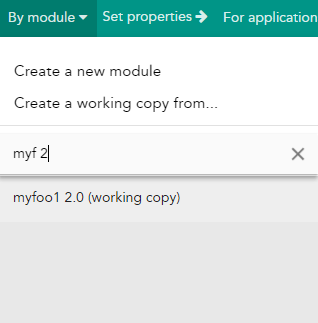Be careful !
As Hesperides replays events, if you store a template with a lot of data, it can increase the response time dangerously.
In this section you will find some right ways to use Hesperides and some very useful tips that can help you to go faster.
If you have several modules with common templates, it is recommended to create a techno that contains thoses templates, and to inherits techno in each module.
For example, instead of creating three modules that contain two identical templates, create rather a techno that will be inherited on all three modules.
Hesperides is not made for storing large files, particularly for static files (without mustache inside).
As Hesperides replays events, if you store a template with a lot of data, it can increase the response time dangerously.
You can customize settings that can make you the most suitable use by clicking on the icon top right of the screen : ![]()

At any moment you can choose english or french language with the top right icons ![]()
hesperides-cli is written in Python, comes up with a few usage examples as a Docker entrypoint or in a Gitlab CD/CI pipeline, and is as easy to install as:
pip install hesperides-cliHere is a glimpse of its feature set:
Commands:
create-application-platform
create-module
create-module-release
create-module-workingcopy-template
create-techno
create-techno-workingcopy
delete-application-platform
delete-module-release
delete-module-workingcopy
delete-module-workingcopy-template
delete-profile
delete-techno-release
delete-techno-workingcopy
delete-templates-packages-cache
get-application
get-application-platform
get-applications-using-module
get-conf
get-events
get-files
get-global-properties
get-global-properties-usage
get-module
get-module-release
get-module-release-template
get-module-release-templates
get-module-workingcopy
get-module-workingcopy-template
get-module-workingcopy-templates
get-modules
get-profile
get-properties
get-properties-instance-model
get-techno-release
get-techno-release-model
get-techno-workingcopy
get-techno-workingcopy-model
get-technos-release
get-technos-workingcopy
get-user
get-versions
local-generate-files
local-validate-files
perform-search-application-platforms
perform-search-applications
perform-search-modules
perform-search-technos
search-module
set-conf
update-application-platform
update-module
update-module-workingcopy-template
update-techno-workingcopy
upsert-module-workingcopy-template
use-profile
write-filesIf you need to instrument Hesperides from Jenkins pipelines, a Groovy shared libray is available for you on Github: voyages-sncf-technologies/hesperides-jenkins-lib.

Here is an example of Jenkinsfile that uses it:
API_ROOT_URL = 'https://hesperides.mycompany.com'
node {
withCredentials([[$class: 'UsernamePasswordBinding',
credentialsId: 'HesperidesCredentials',
variable: 'auth']]) {
stage('Releasing module demoKatana-war') {
hesperides.releaseModule(apiRootUrl: API_ROOT_URL,
auth: auth,
moduleName: 'demoKatana-war',
workingcopyVersion: '1.0.0',
releaseVersion: '1.0.0')
}
stage('Setting modules version on platform USN1') {
hesperides.setPlatformModulesVersion(apiRootUrl: API_ROOT_URL,
auth: auth,
app:'KTN',
platform:'USN1',
currentVersion:'1.0.0',
newVersion:'1.0.0')
}
stage('Updating properties of platform USN1 from a JSON file') {
hesperides.updateProperties(apiRootUrl: API_ROOT_URL,
auth: auth,
app: 'KTN',
platform: 'USN1',
jsonPropertyUpdates: 'http://gitlab.mycompany.com/KTN-USN1.json',
commitMsg: 'vsct-hesperides-api tests from Jenkinsfile')
}
}
}Autocomplete is used in several parts of Hesperides. It has a classic usage, a.k.a it gives users the option of completing words or forms by a shorthand method on the basis of what has been typed before.
You can then type a part of module name and a part of the module version (separated by a blank)
For example if we have created those three modules :
| Name starting with "myf" | Exact name of module | Name sarting with "myf" and version starting with "2" |
|---|---|---|
 |
 |
 |
You can use "*" : for example m*1 to return myfoo1
Tree mode when you edit platform is very useful because it allows you to surf your platform
| Tip | Operation | Result |
|---|---|---|
| Quick extend |  |
 |
| Filter |  |
 |
The filtering string will be apply on every stage of your tree : logic group, module name, instance name

Hesperides will alert you in two ways if your platform uses a module that does not exists.
